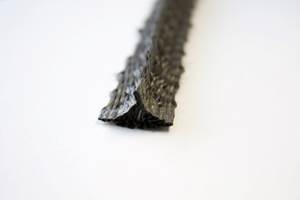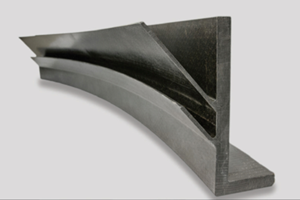Suppliers team to amp Viking 80C performance
Thanks to a coordinated effort with its fabric, core and panel suppliers, Viking Yachts was able to introduce carbon fiber cost-effectively, shaving weight and boosting speed in its new 24m-long 80C model.
A well-known builder of performance sportfishing and cruising vessels, Viking Yachts (New Gretna, NJ, US), partnered with key suppliers, 3A Composites (High Point, NC, US), Mahogany Co. (Mays Landing, NJ, US) and Vectorply (Phenix City, AL, US), to replace fiberglass mat and woven roving with noncrimp fabrics in the 1990s, and to introduce infusion in the 2000s.
“We’ve worked with Viking for decades,” recalls 3A Composites product development manager Russell Elkin, “but as a core supplier, you can’t just recommend core, but must consider all of the materials in the laminate, because they all work together.” Thus, when Viking began looking, again, to cut weight and boost performance across its models, it called on the same team to discuss options.
“The idea was to begin using carbon fiber,” says Elkin, “but because it’s more expensive, the question was where and how to employ it most efficiently.” Reinforcements supplier Vectorply compiled initial material studies, using its proprietary VectorLam Cirrus software and suggested replacing typical but bulky 48-oz/yd2 (1,628-g/m2) and 64-oz/yd2 (2,170-g/m2) E-glass quadraxial fabrics with lighter 35-oz/yd2 (1,187-g/m2) and 44-oz/yd2 (1,492-g/m2) hybrid carbon/E-glass quads in selected laminates.
According to Viking Yachts’ VP of design and engineering, Lonni Rutt, Viking’s 80C 80-ft/24m convertible (which offers an interior salon and more cabin space than Viking’s express style) was the perfect model to trial the hybrids. “We were looking to bring a new model between the 76-ft [23m] and 82-ft [25m] class that was more efficient with better performance and more room,” says Rutt. “Because we are limited in horsepower when you get to that size, performance is all about weight — a lighter boat is going to go faster.”
The suppliers worked together to complete several test matrices using the new materials, AME 6001 INF-35 vinyl ester infusion resin from Ashland Performance Materials (Columbus, OH, US) with Norox MCP-75 initiator from United Initiators (Elyria, OH, US). Testing was completed in November 2013, which included tensile, compressive, and flexural properties in the 0°, 90° and 45° (bias) orientations. Vectorply and 3A Composites then worked with Viking engineers to finalize 80C hull bottom and side laminates, using ABS High Speed Craft scantling rules as guidelines. Samples of Vectorply EC-QXM 3508 and 4408 hybrid quadraxial fabrics were sent to Mahogany for cutting and kitting, then forwarded to Viking for in-house process testing.
Mahogany pre-cuts and kits reinforcements and core materials for all Viking models. “We touch every composite part, from hulls and decks to stringers and bulkheads to floors and tanks,” says Mahogany’s VP of sales George P. Aaron. “Viking sends us the CAD files and we generate the kit patterns.” He notes that with the large size of Viking’s boats and backlog, the kitting provides needed production efficiency: “They receive a finished kit and can begin installation immediately.”
The team worked to further minimize weight, optimizing the sandwich laminates for core density and thickness, according to loads and location. 3A’s BALTEK SB.100 balsa is used in the hull bottom while lower density BALTEK SB.50 is used in the hull sides. The deck’s sandwich construction is cored with a combination of BALTEK balsa and AIREX polyvinyl chloride (PVC) foam core.
Viking also incorporates sandwich panels for bulkheads and soles, cut to net shape and kitted by Mahogany, using 3A’s AIREX C70.75 (75 kg/m3) PVC foam core and Vectorply E-LTM 1208 glass fabric skins. These composite panels also help to keep weight in check.
Production of the first 80C in early 2015 showed phenomenal results. Not only did it achieve a top speed of >41 knots — roughly 3.5 knots better than the 82-ft/25m boat — it also outpaced the smaller 76-ft/23m model. Rutt credits much of the success to team members. “A tremendous benefit for our company has been the specific knowledge everybody brings to the table,” he says. “You collaborate with people who have the opportunity to see other things and bring new, different ideas.” Elkin adds, “We were able to deliver a fully optimized composites package as a supplier team.”
Related Content
Plant tour: Albany Engineered Composites, Rochester, N.H., U.S.
Efficient, high-quality, well-controlled composites manufacturing at volume is the mantra for this 3D weaving specialist.
Read MoreBiteam introduces 3D Noodle International AB spin-off for 3D fabric noodles
Biteam 3D’s third spin-off implements its proprietary 3D weaving technology to produce a variety of carbon, ceramic and other fiber 3D fabric noodle preforms.
Read MoreCAMX 2022 exhibit preview: Bally Ribbon Mills
Bally Ribbon Mills’ highlights its capabilities in design and manufacture of woven structural shapes for hybrid composite structures used in aerospace applications.
Read MoreThe making of carbon fiber
A look at the process by which precursor becomes carbon fiber through a careful (and mostly proprietary) manipulation of temperature and tension.
Read MoreRead Next
Composites end markets: Energy (2024)
Composites are used widely in oil/gas, wind and other renewable energy applications. Despite market challenges, growth potential and innovation for composites continue.
Read MoreCW’s 2024 Top Shops survey offers new approach to benchmarking
Respondents that complete the survey by April 30, 2024, have the chance to be recognized as an honoree.
Read MoreFrom the CW Archives: The tale of the thermoplastic cryotank
In 2006, guest columnist Bob Hartunian related the story of his efforts two decades prior, while at McDonnell Douglas, to develop a thermoplastic composite crytank for hydrogen storage. He learned a lot of lessons.
Read More

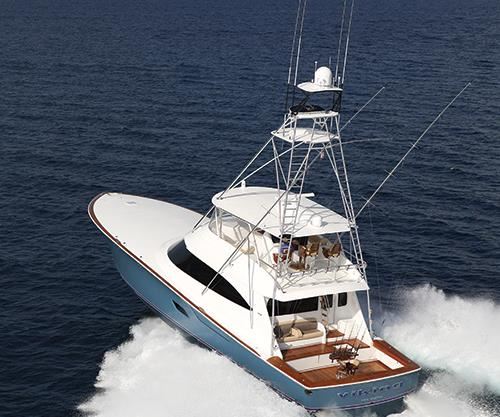
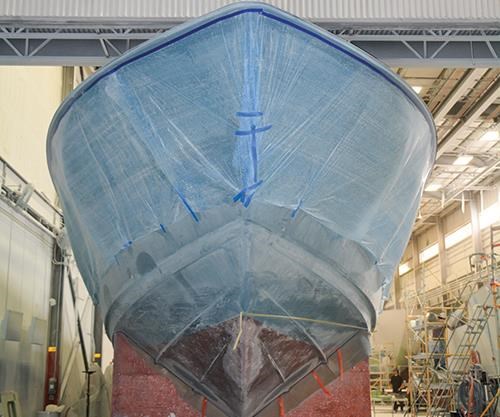
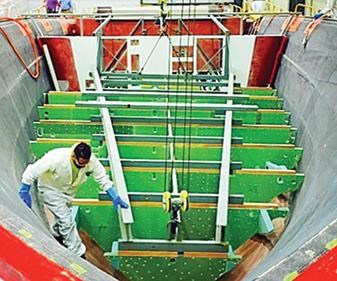













.jpg;maxWidth=300;quality=90)





